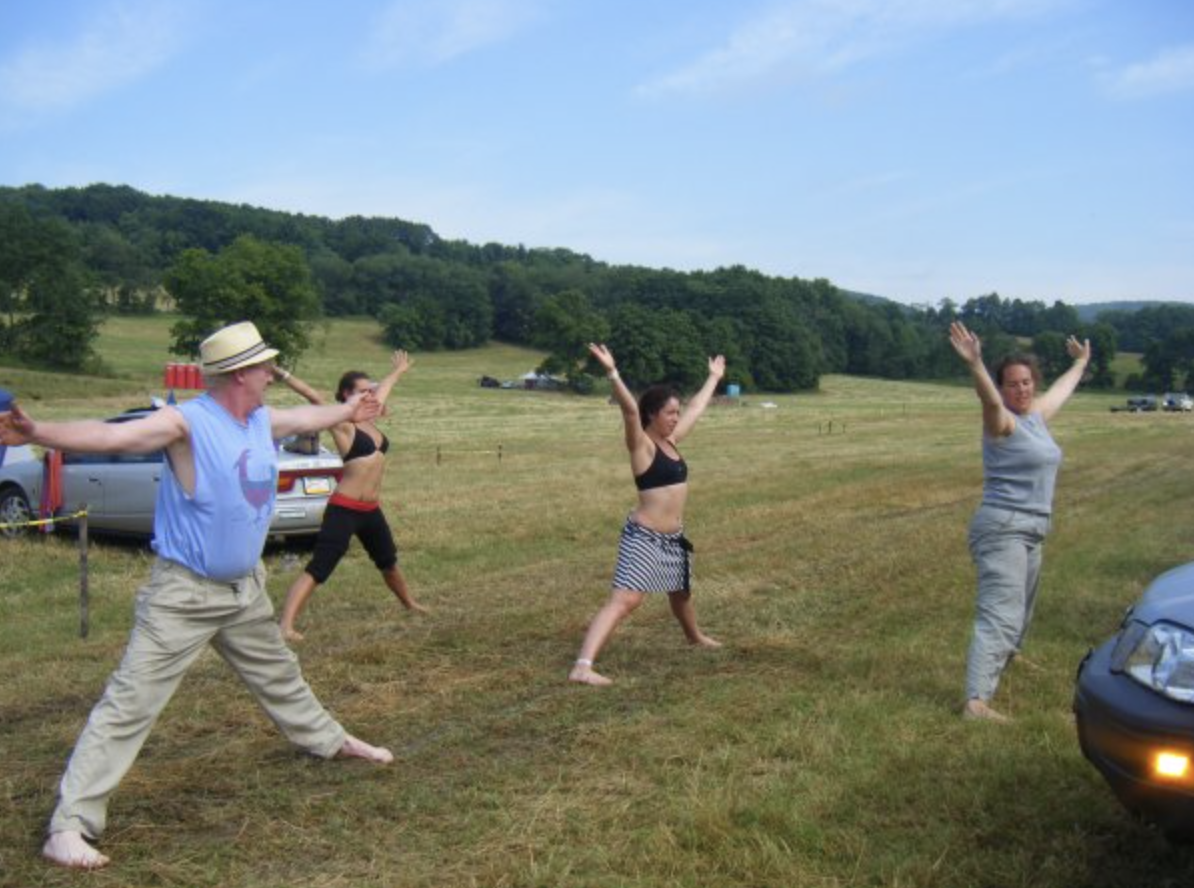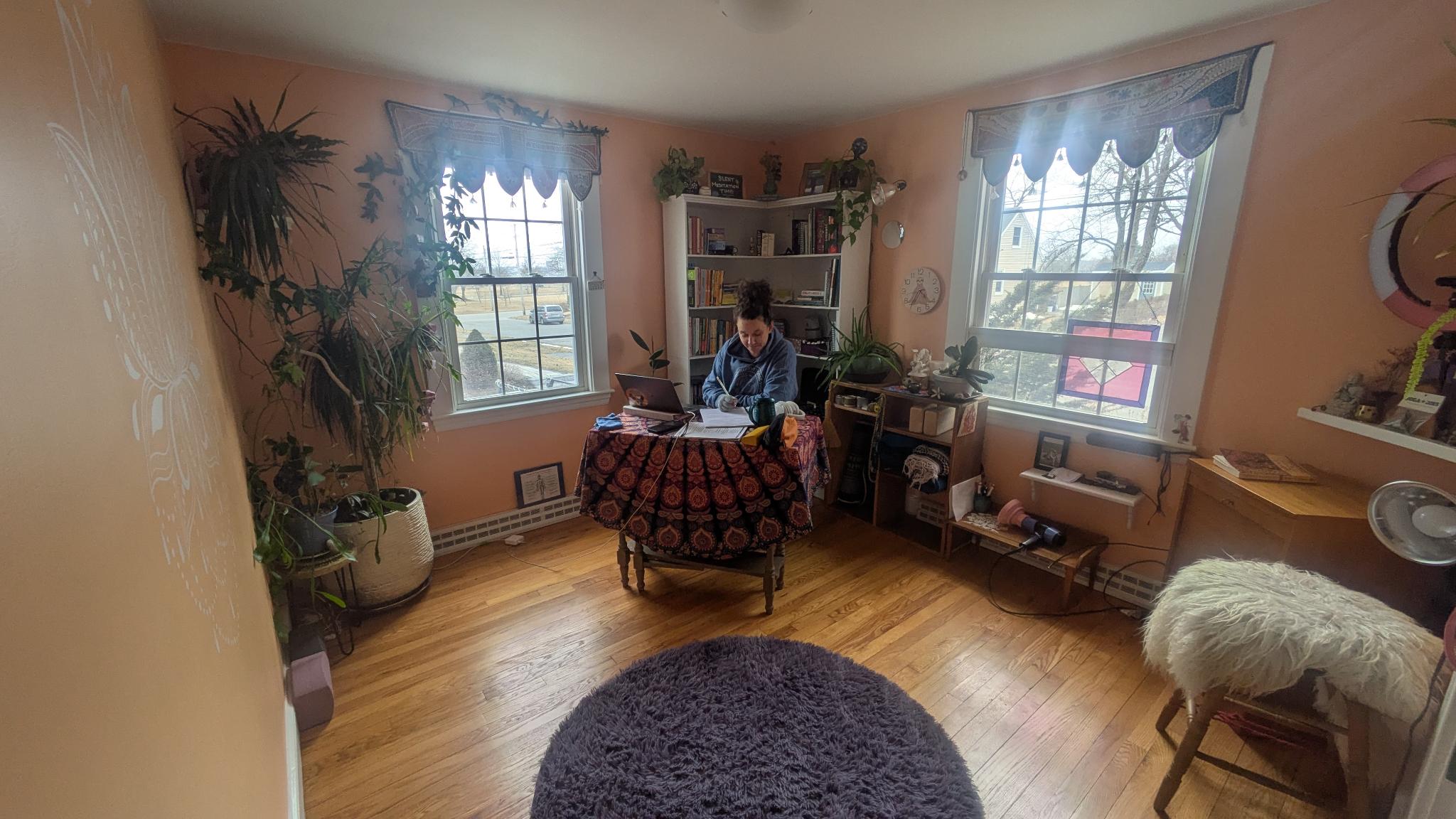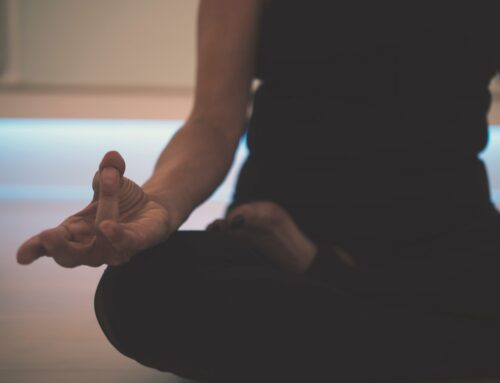I’ve been thinking a lot about consistency in yoga. What does it really mean? Is it the same for everyone? How can we apply the principles of classical yoga in a modern world? Does it mean practicing every day? How do we show up in a way that aligns with where we are in life?
For years, in my practice consistency was about frequency—how often I rolled out my mat, how many classes I attended, how structured my routine was. And during that time in my life, that was just what I needed. But lately, for me, I’ve been finding that consistency isn’t just about doing yoga, it’s about how I orient myself towards yoga in everything I do.

My first-ever yoga photo—July 2009 (about six years after my first class, back when we did yoga without taking pictures of it).
Asana Is Just The Beginning
At some point, every dedicated yoga practitioner realizes that the physical practice—while valuable—is only the beginning. The asanas prepare the body, but the real work begins when we integrate yoga beyond the mat. The breath, the philosophy, the mind, the way we move through the world—these are where yoga truly takes root.
As Patanjali states in the Yoga Sutras, yogas citta vritti nirodhah—yoga is the cessation of the fluctuations of the mind. Consistency in yoga is not about achieving physical mastery but about cultivating steadiness in our thoughts, actions, and way of being in the world.
There was a time when I measured my practice in days per week, in how many postures I was working on, or how disciplined I was with my sun salutations. But life shifts. Energy shifts. I have done thousands of hours of asanas—that isn’t where my growth edge is anymore.
So now, what does consistency actually look like? For me, it has come to mean staying in relationship with yoga, even when it looks different than it used to. But staying in relationship does not mean abandoning discipline. The mind will always seek the easy route—true practice asks us to recognize this and work with it rather than giving in.
Maybe your body can’t do the same type of physical practice you have always done, or maybe the physical practice no longer provides the same experience of moving meditation. Maybe it is time to adjust your practice—but not to walk away from it. Your practice has to grow with you.
How My Own Practice Has Changed
I know my experience as a teacher is different from that of my students. Sometimes I teach as many as 5 asana classes a day and so assuredly everyone’s struggles with consistency are different. But at its core, we all face the same challenge: how do we stay connected to yoga when life pulls us in different directions?
When I teach multiple classes a day, rolling out my mat to practice at home seems hard, and sometimes just silly. My personal practice looks different than it did. I don’t always need an additional session on my own mat. These days, I am finding yoga in small, steady ways throughout my day.
Some days, consistency looks like:
- Taking a few moments in the morning to breath deeply and notice my mind.
- Reading my Jyotish texts, and pondering the flow of life.
- Have the mental fortitude to put down the cell phone and get outside to connect with nature.
- Reading something that reconnects me to yoga’s deeper wisdom.
And some days? It’s nothing formal at all. But the practice is still there, because yoga is not just something I do—it’s something I live.
When Consistency Feels Hard
I don’t always feel like showing up. Some days my body is tired, sometimes my mind resists. I think that’s normal. But yoga teaches that discipline (Tapas) is an essential part of growth. We do not practice only when it is easy or convenient—we practice because it helps us refine our awareness, our actions, and our ability to show up fully in life.
In those times, I ask myself:
- Am I avoiding practice because I genuinely need rest, or because it feels hard to show up?
- What’s one small way I can reconnect, even if it’s just for a minute?
- How can I return to yoga without judgment, without making myself “wrong” for taking a break?
Discipline is uncomfortable at times—but that discomfort is where growth happens. Consistency isn’t about forcing ourselves into rigidity, but it also isn’t about choosing ease over effort. It’s about choosing to keep coming back.
Yoga Beyond the Mat
Maybe for you, yoga beyond the mat looks like mindful breathing in traffic, or repeating a mantra before a big meeting. Maybe it’s the way you handle challenges at work or in relationships. No matter what form it takes, let your yoga extend beyond the mat—into your breath, your choices, and the way you move through the world.
Lately, I’ve been watching my yoga practice show up out in the world. I’ve been doing pottery, and it requires the same kind of presence—patience, discipline, breath. Some days the clay moves the way I want it to, and some days it collapses under my hands. But just like yoga, the practice is in showing up, in trying again, in learning from the process.

Jyotish Takes the Mat Today!
Similarly, my study of Jyotish (Vedic astrology) has deepened my understanding of cycles, discipline, and self-awareness. Just as yoga asks us to align with breath and movement, Jyotish asks us to align with time and karmic rhythms. Both remind me that consistency isn’t about short-term effort—it’s about long-term alignment.
Some days, practice is breath. Some days, it’s mantra. Some days, it’s movement. And some days, it’s the commitment to learning—whether it’s on the mat or in life.
And that’s what I keep coming back to: Consistency in yoga isn’t about how many times we step on the mat. It’s about staying connected, in whatever way makes sense for this moment in life, while still honoring the structure and discipline that makes yoga a true practice.
What’s Your Version of Consistency?
There’s no single right way to stay consistent in yoga. Maybe for you, it’s a weekly class. Maybe it’s five minutes of mantra in the morning. But whatever it is, explore it with curiosity and dedication.
Instead of asking, How often am I practicing? maybe we can ask, Am I showing up even when it’s not easy? Because in the end, that’s what really matters.
However you practice, whenever you practice—just keep coming back.





